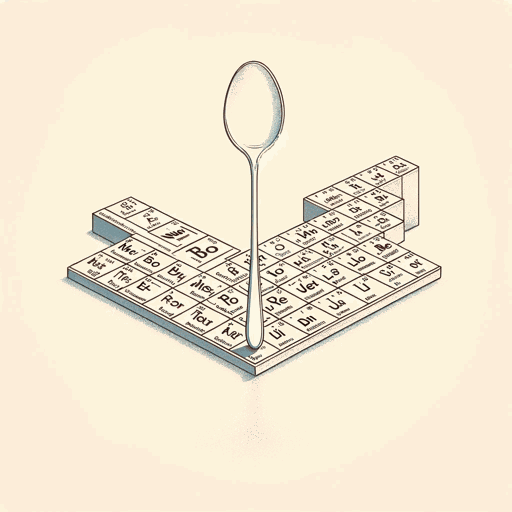93 pages • 3 hours read
Sam KeanThe Disappearing Spoon: And Other True Tales of Madness, Love, and the History of the World from the Periodic Table
Nonfiction | Book | Adult | Published in 2010A modern alternative to SparkNotes and CliffsNotes, SuperSummary offers high-quality Study Guides with detailed chapter summaries and analysis of major themes, characters, and more. For select classroom titles, we also provide Teaching Guides with discussion and quiz questions to prompt student engagement.
Part 3Chapter Summaries & Analyses
Part 3: “Periodic Confusion: The Emergence of Complexity”
Chapter 8 Summary: “From Physics to Biology”
Element 43, technetium, has a strange distinction: It has been “discovered” more times than any other element (138). Technetium, very little of which lies in the Earth’s crust, is unstable and decays into element 42, molybdenum. Technetium means “artificial,” as most quantities are made in the lab.
Italian Emilio Segrè visited Berkeley in 1937. While touring Ernest Lawrence’s new atom-smashing cyclotron, he requested that scraps of leftover molybdenum from the machine be sent to his lab in Italy—and then discovered technetium scattered in those scraps. Months later, Segrè was exiled from Italy for being Jewish, and Lawrence agreed to give him a job at Berkeley. However, perhaps harboring a grudge for the technetium discovery, Lawrence saddled Segrè with a significant pay cut.
Segrè, along with his mentor, Enrico Fermi, went on to misread the clues that led others to discover fission in 1939. Segrè also airily dismissed an associate’s lab results on a strange material, thinking it a mere transition metal The associate, Edwin McMillan, dug deeper and proved he found the first of the transuranium elements, number 93, neptunium. McMillan won the Nobel Prize for his discovery.

